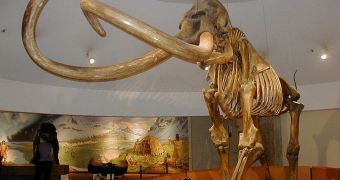Last month, a team of Russian investigators conducting digs at a site in the republic of Yakutia, in the northeastern parts of the country, found a series of living cells that once belonged to a mammoth.
The research group recovered the samples from a depth of around 100 meters (330 feet), where they were buried under numerous layers of permanently frozen soils called permafrost.
In a statement released by the Yana 2012 expedition crew, the team reports the recovery of adipose tissues, fur and bone marrow from the mammoth specimen. The announcement was made by the leader of the research effort, scientist Semyon Grigoryev.
According to the Russian news agency RIA Novosti, infamous South Korean biotechnologies Hwang Woo-Suk, who reported the first successful cloning of human embryos, has already expressed his interest in the findings, and their potential applications.
It's interesting to note here that Hwang already has an agreement with another group of Yakutsk-based scientists, for cloning a woolly baby mammoth whose remnants were discovered in 2011, on the coasts of the Laptev Sea. The animal is believed to have died more than 10,000 years ago.
Currently the leader of the Sooam Biotech Research Foundation, Hwang was once bestowed the title supreme scientist in his native country. However, a series of scandals related to his research, and to embezzlement charges, saw him fall out of public and governmental graces in 2006.
But not everyone is impressed with the new discoveries. Scientists based at the Russian Academy of Sciences Institute of Paleontology say that it's unlikely their colleagues from the Yana 2012 expedition actually discovered cells that were still alive.
“The cell structure with nucleus can be preserved under special conditions in deep-freeze,” explains the chief of the mammal laboratory at the Institute, Alexander Agadzhanyan. Without a stable chemical exchange with their environment, cells cannot remain alive.
In addition, the expert say, scientists have thus far been unable to extract intact DNA samples from the mammoth cells. The latter are absolutely essential for cloning, as well as for establishing the genetic heritage of the animal.

 14 DAY TRIAL //
14 DAY TRIAL //